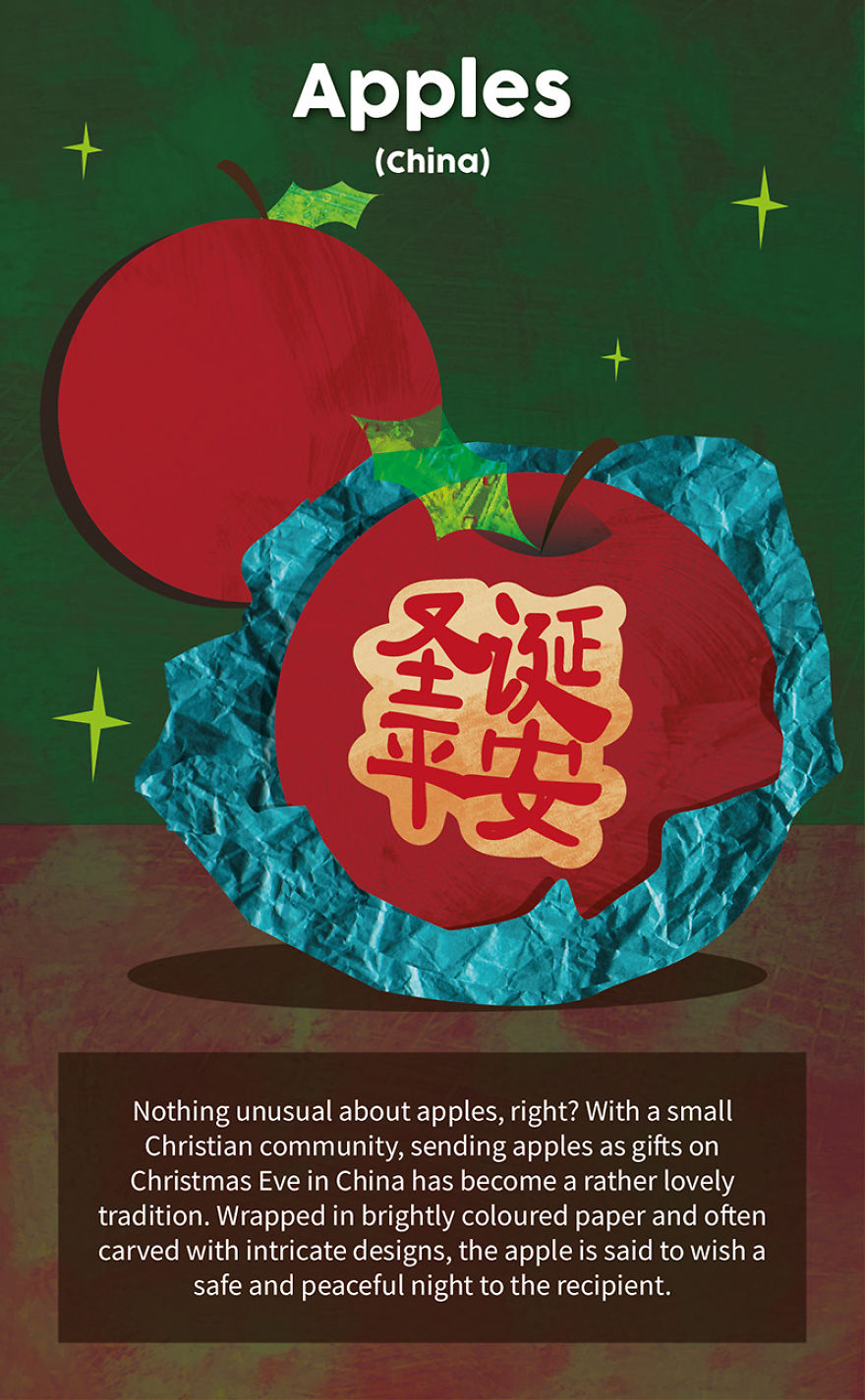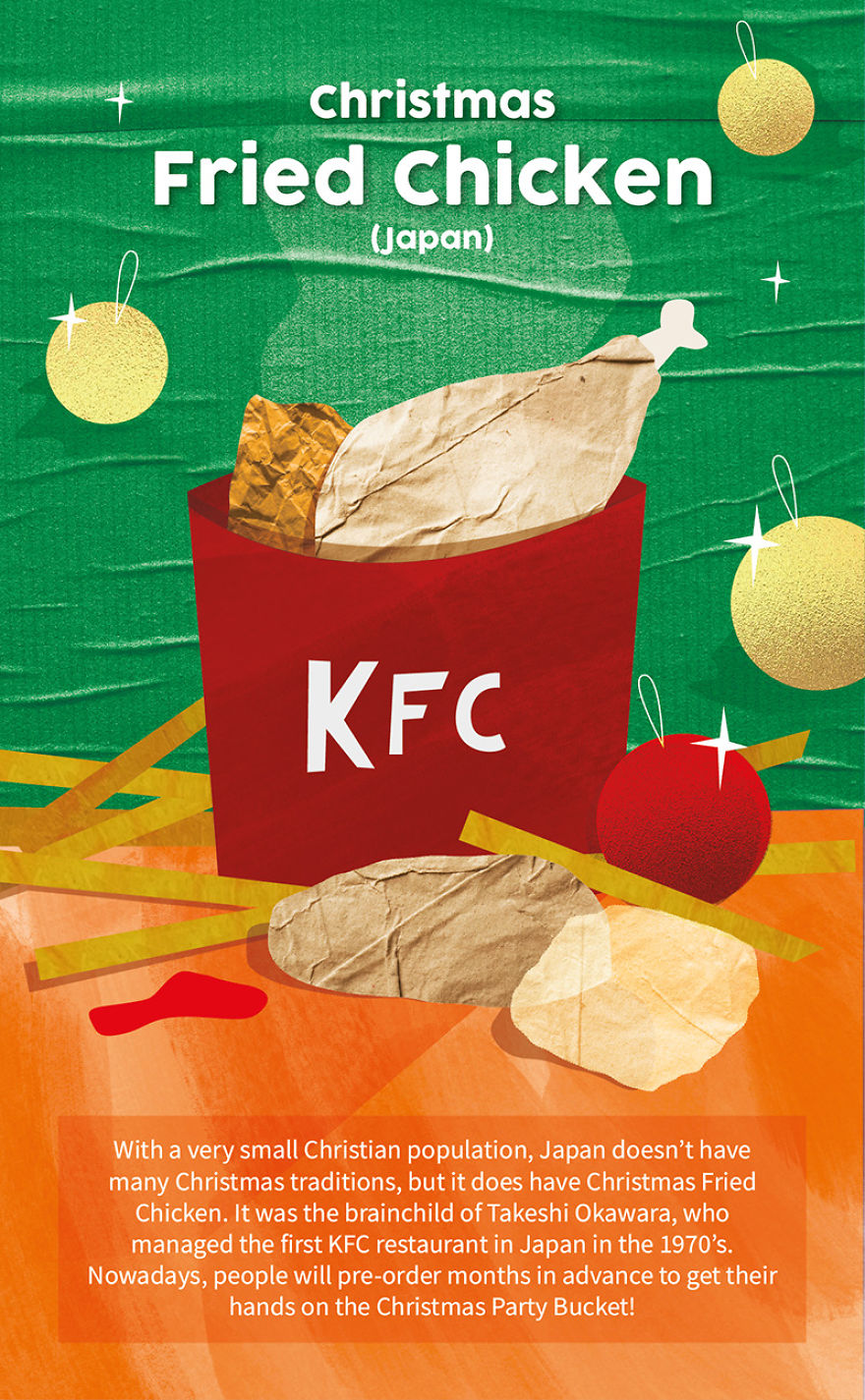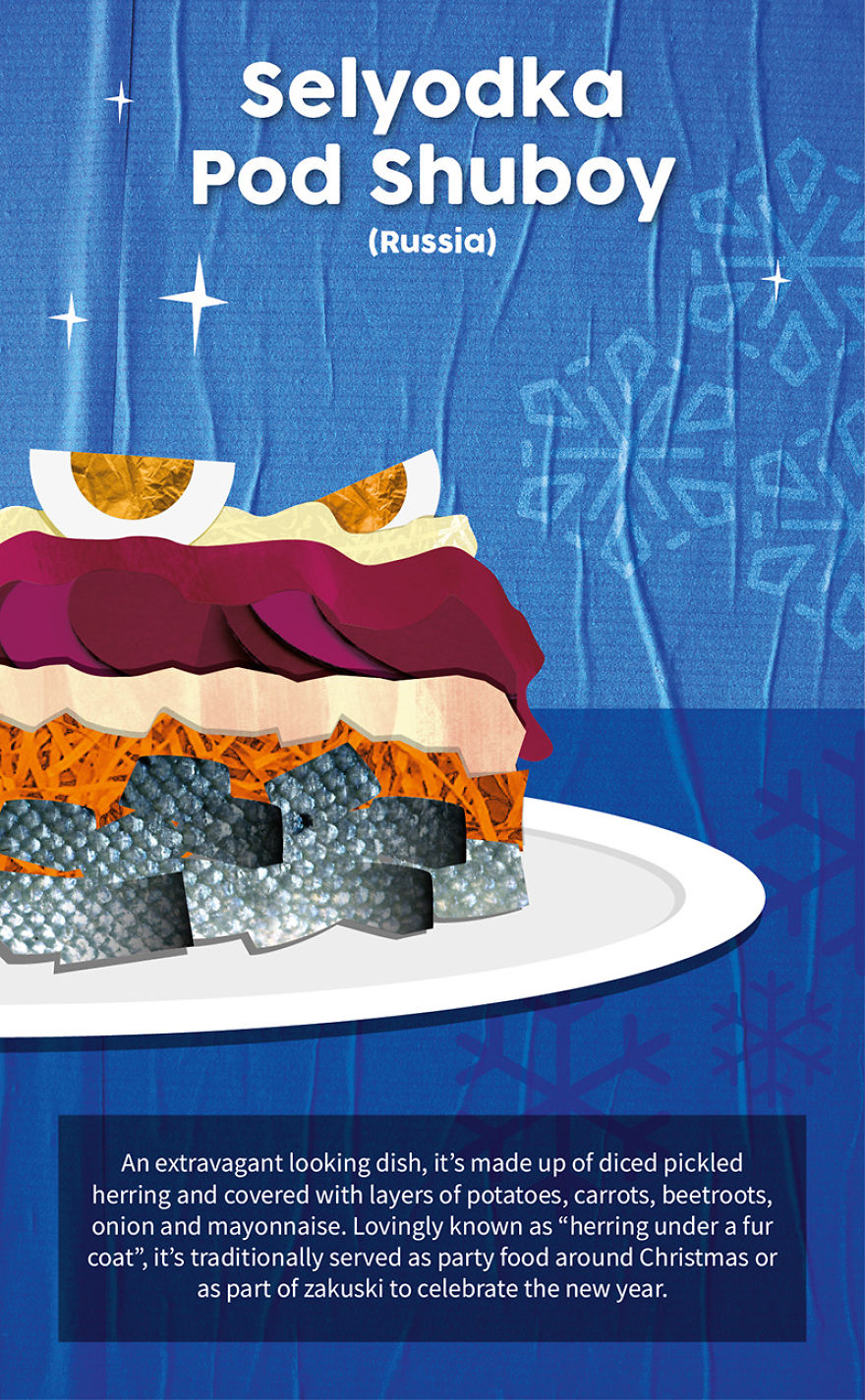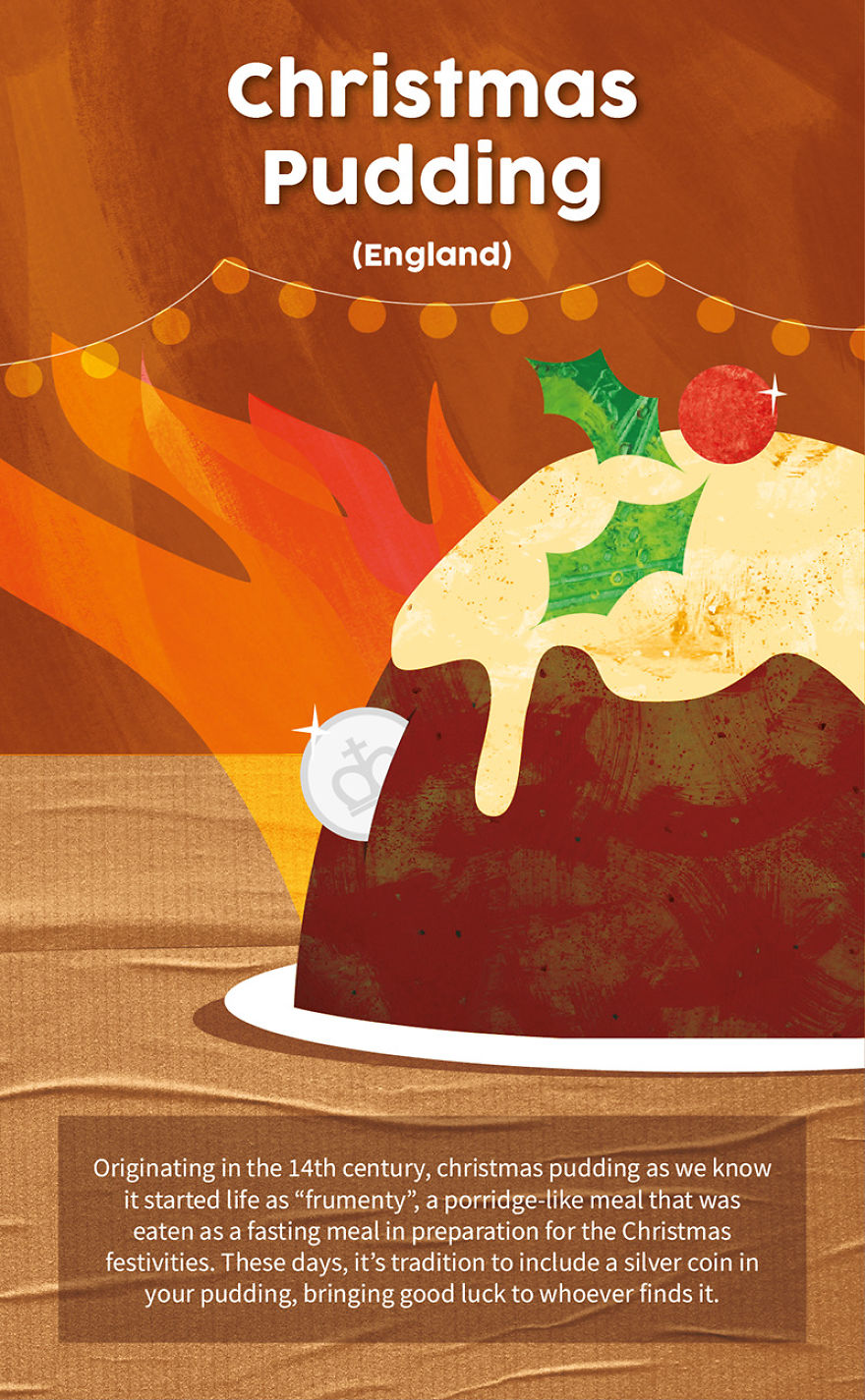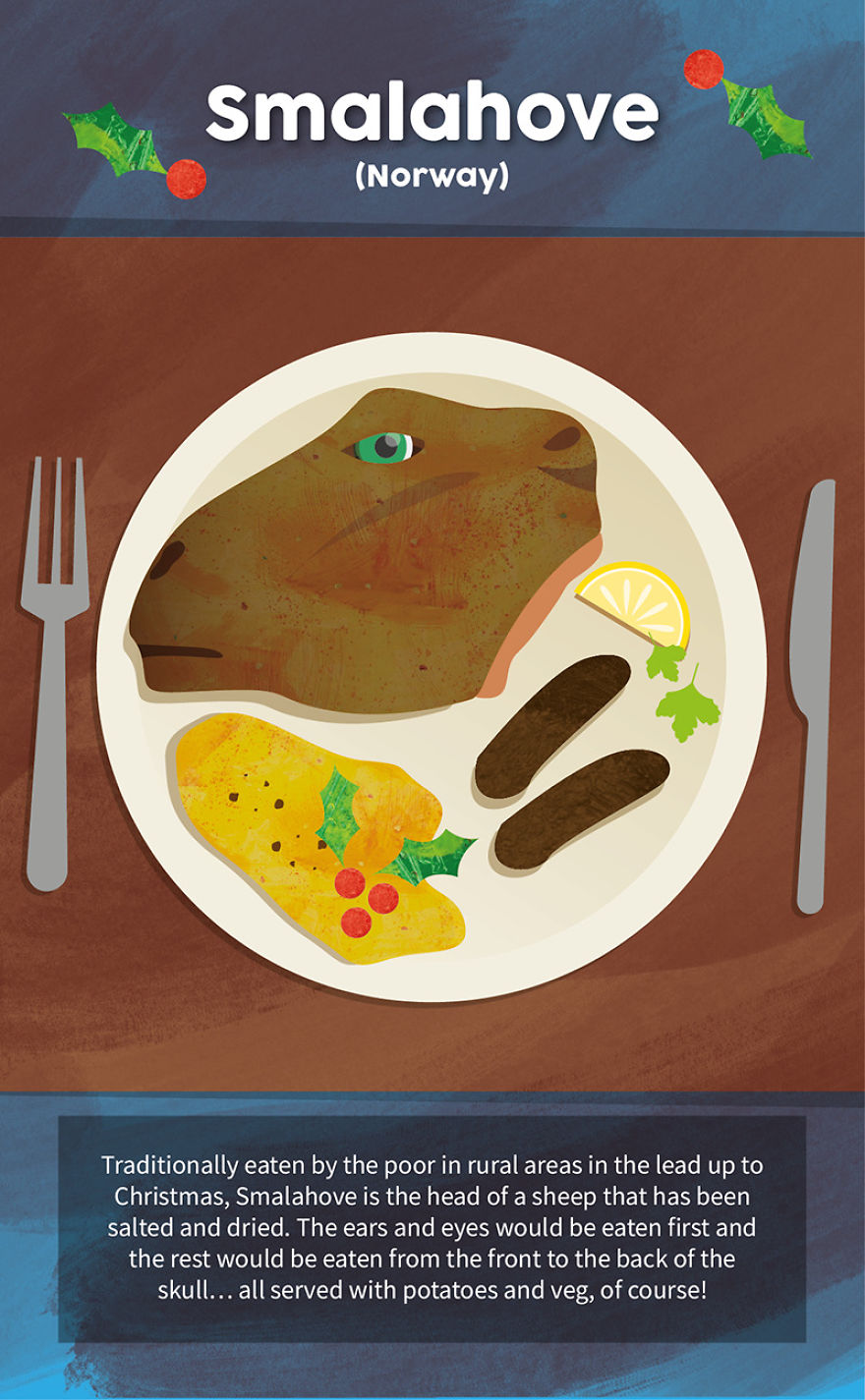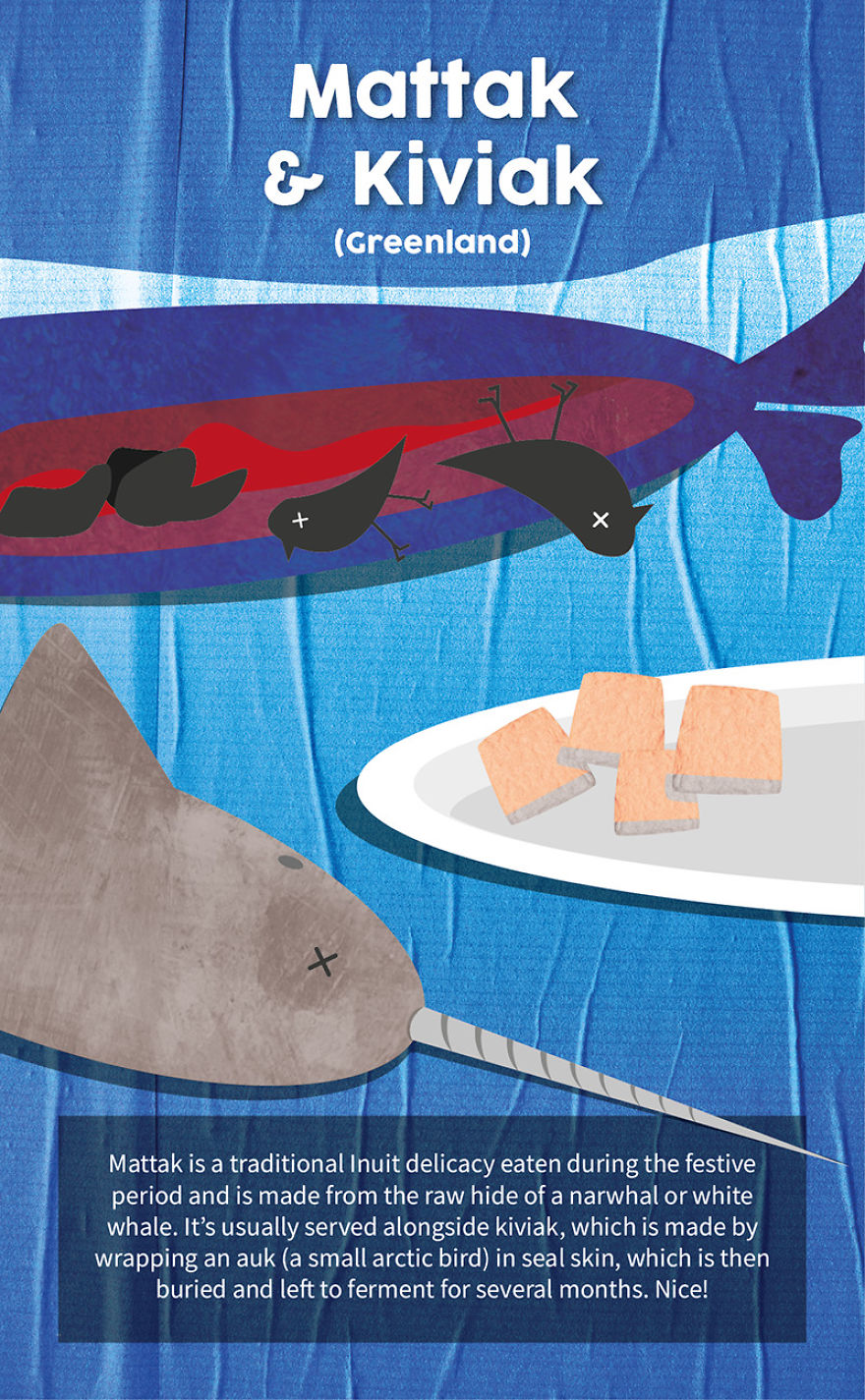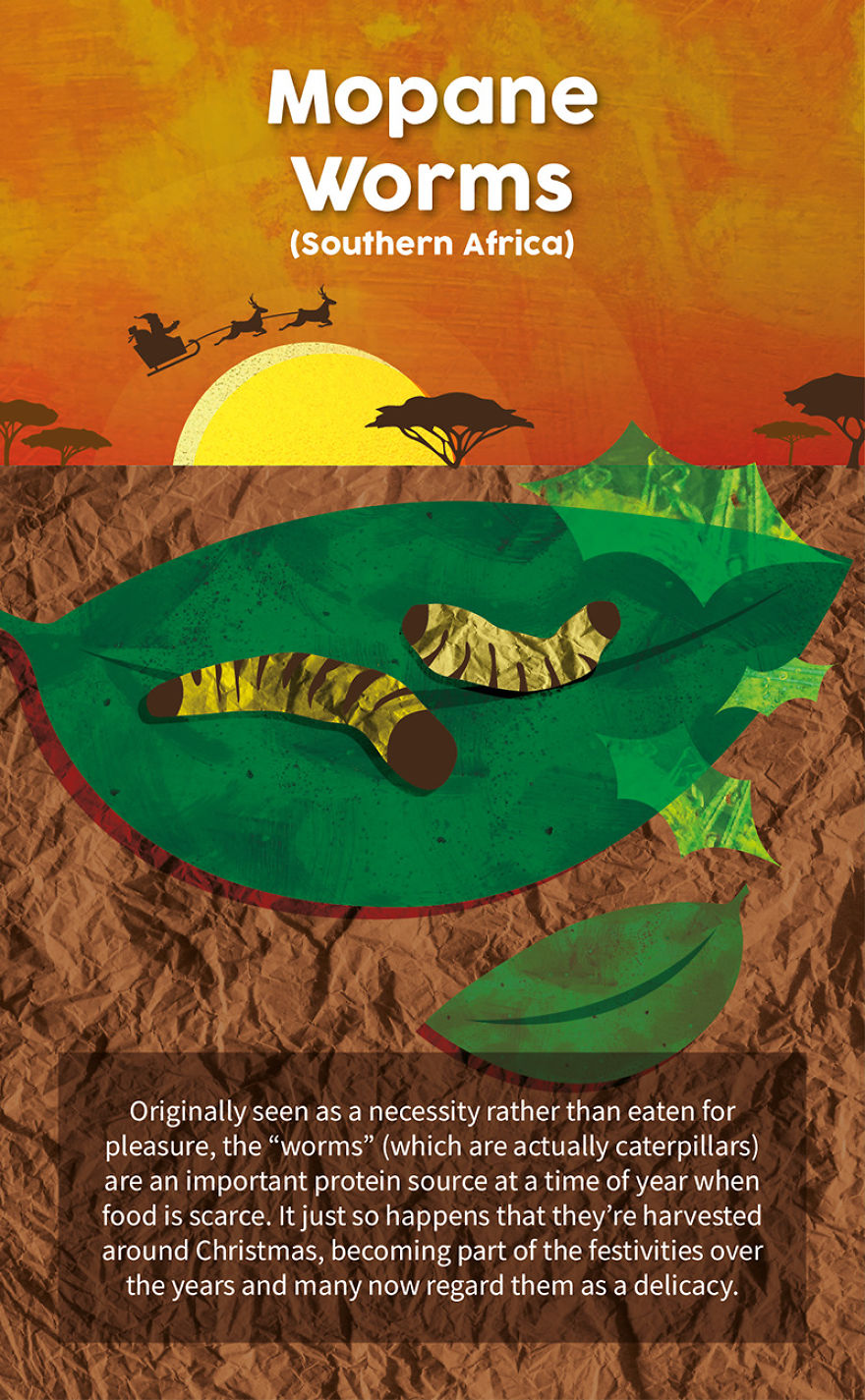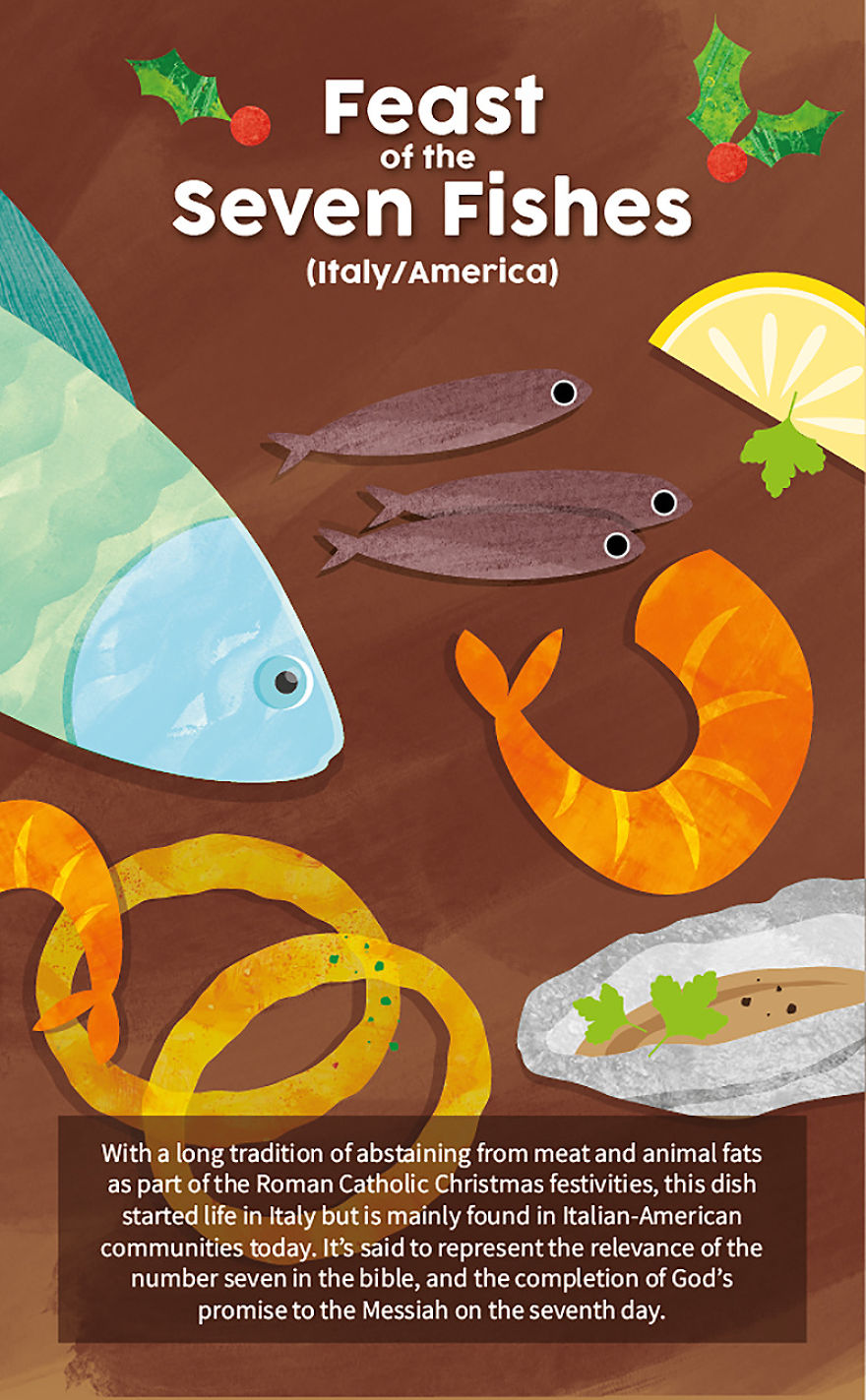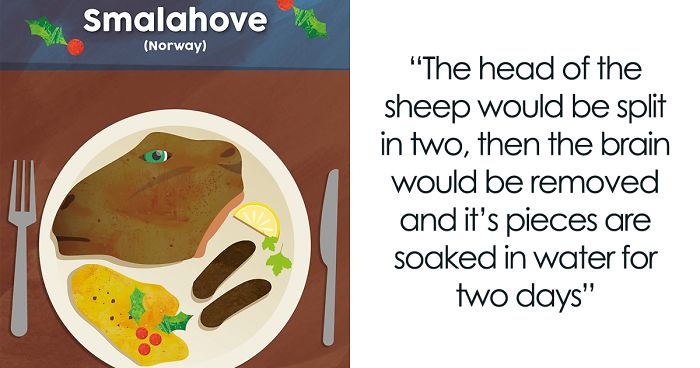
12Kviews
8 Pictures We Illustrated That Show The Weird Christmas Food Traditions From Around The World
Christmas wouldn’t be Christmas without delicious food. A big fat turkey fresh out of the oven, with mountains of seasonal veg and lashings of gravy. It’s a dream come true for a large portion of the western world. But what we consider a festive treat, might not do it for others. Some festive food that’s traditionally eaten in countries other than our own, might seem just a little too “out there” for our tastes.
Lots of the food eaten at Christmas time across the world has come from a long tradition that’s passed down through the generations, while others are a relatively new idea. From Christmas pudding in England to Mopane caterpillars in South Africa, many of the foods we eat during the festive period were once a necessity rather than a treat. But over the years, many of these traditional Christmas foods have become somewhat of a delicacy for many.
CDA started looking deeper into Christmas foods around the world and I have to say, some are pretty eye-opening! Here are their favorites illustrated. Let me know if there's are any others that you think are worth a mention!
More info: cda.eu
This post may include affiliate links.
Christmas Eve Apples - China
There’s nothing unusual about apples, right? But in China, it’s what they do with them that counts. Christmas isn’t a public holiday in China, having virtually no cultural ties to the festival, which has its roots in western Christianity. However, celebrating Christmas is becoming more and more popular, especially among the younger generations of Chinese people.
In recent years, one tradition that’s been adopted is to share decorative apples on Christmas eve with your loved ones. The apples are carved with an encouraging message and wrapped in colorful paper ready to be presented. They’re known as “peace apples” and are a way to show just how much you care about the health and well-being of someone.
This one is nice. I love apples. You can't go wrong with a nice raw apple.
Kfc Christmas Dinner - Japan
With a very small Christian population, Japan has very few Christmas traditions. It does, however, have Christmas fried chicken. A relatively new tradition by most standards, it’s popularity started to grow in the 1970s when KFC in Japan began to promote fried chicken as a Christmas meal.
These days, sitting down to a KFC Christmas dinner is something the Japanese have to start thinking about months in advance. With an estimated 3.6 million families expected to partake each year, pre-booking is essential if you don’t want to wait in line for hours!
I generally love Japanese culture and cuisine... but they sure got that one wrong. I'd rather have a nice hot bowl of udon or ramen.
Selyodka Pod Shuboy - Russia
Originating in Russia, Selyodka Pod Shuboy is probably one of the more extravagant looking dishes on our list. Literally translated to “herring under a fur coat”, it’s called so because it’s made up of diced pickled herring that’s layered under diced potato, carrots, beetroot, onions, and mayonnaise then topped with boiled eggs. Often fashioned into elaborate designs, the dish is usually served as party food and is a must on many Russian holidays, particularly at Christmas time.
Christmas Pudding - England
Originating in England way back in the 14th century, Christmas pudding began life as a porridge-like meal that was full of fruits, oats, nuts, and suet called “frumenty”. It was traditionally served as a fasting meal that would be made about 5 weeks before Christmas in preparation for Advent.
The heavy meal would also be mixed with alcohol then steamed or boiled. It was often considered good luck for all members of the family to stir the mixture, making a wish as they go. The pudding would then have various items stirred into it. Silver coins, wishbones, silver thimbles, and rings were all thought to bring good luck, prosperity and even marriage to those that were lucky enough to find them. These days, you’d be hard pushed to find any of these items in a store-bought Christmas Pudding. It’s a lawsuit waiting to happen!
Smalahove - Norway
Originating in the western regions of Norway, Smalahove is a dish made from a sheep’s head served with potatoes and rutabaga. It’s traditionally served the Sunday before Christmas and would be an indulgent meal for the poorer Norwegian population. What makes this dish super interesting is the way in which it’s prepared. The head of the sheep would be split in two, once split, the brain would be removed and the pieces are soaked in water for two days. Once soaked, the head would be salted, dried and then smoked, it would then be boiled or steamed ready to be eaten.
The eating process is also an art in itself. Firstly, the ears and eyes are eaten as they’re considered a delicacy, the meat would then be eaten from the skull, starting at the front and working your way to the back. These days, Smalahove tends to be reserved for tourists and isn’t something that would usually be found on a Norwegian dinner table at Christmas.
does anyone else find it strange that there are no pictures of these meals just drawings
Mattak & Kiviak - Greenland
In one of the coldest places on the planet, food is something that needs to be taken seriously. In the depths of winter, a Greenlandic Christmas dinner would be considered somewhat of an acquired taste for the rest of the world. Both unusual and fascinating, mattak and kiviak are two dishes that you can expect to be served.
Traditional Inuit fare, mattak is a strip of skin taken from the narwhal or white whale with the blubber still attached, this is then carved up and served in bite-sized chunks and is said to taste like fresh coconut. It’s often served alongside kiviak; the flesh of a small arctic bird called auk which is then stuffed inside a sealskin. The sealskin is then buried for several months to ferment. Once the auk is in an advanced state of decomposition, it’s ready to eat. Yum!
Mopane Worms - Southern Africa
Rich in protein, the Mopane worms are actually the caterpillar of the Gonimbrasia Belina moth which are in abundance around Christmas time in Southern Africa. They get their name from the Mopane tree which is well suited to the drought-ridden landscapes of Namibia, Botswana and South Africa, providing the perfect haven for the worms to flourish. The harvest will begin in late November, making them the ideal Christmas protein source.
Once harvested, some worms are preserved for the rest of winter while fresh worms are usually fried with onions, tomatoes, and chili. As this practice was born from necessity, they’re not something that’s eaten to the same extent these days and many consider them a form of bushmeat, but there are a number of communities that regard them as a delicacy.
Oh, please come right with your facts. Mopane's are a cultural dish, not a national dish nor are they a Xmas meal from necessity. If anything, they are seen as comfort food for the older generations and a strange delicacy for younger people. Majority of Saffas, have never even seen them, let alone tasted them. Xmas is chicken, beef and mutton (Africans are farmers, hunters, herders, meat was something that wasn't always sorely missed, in cases where it was Xmas would bring pap (grits) and cabbage and meaty bones). Some families even had turkey. Don't trivialize and change an entire country's story by using something that is incorrect and not thoroughly researched. Search "Tsonga tribe" that's the main tribe that eat and harvest masonja (mopane worms) in SA. This is like saying that escargot's and frog legs are the national Xmas dishes in Europe. SA has more than 10 cultural tribes. Somewhat different foods and traditions.
Feast Of The Seven Fishes - Italy/America
It’s a tradition for Roman Catholics to abstain from eating meat and animal fats around Christmas, but one tradition that has risen from this is what’s known as “The Feast of the Seven Fishes”. Though it has no official role in the Roman Catholic calendar, the feast is said to represent the significance of the number seven in the bible. The feast will take place on Christmas eve with numerous different fish and seafood dishes being served across many courses.
The roots of the feast are placed in Southern Italy – a part of the country dominated by delicious fish dishes taken from the bountiful coastline. As the Italians began to migrate to America in the late 1880s so too did the Feast of the Seven Fishes, making it a popular, nostalgic celebration dinner among many Italian-American families today.
Czechs buy a live carp and keep it in their bathtubs until Christmas, when it is eaten for dinner. The fish are sold from giant tanks at Christmas markets. Kind of makes me sad because I am not sure the fish are not suffering in the tubs...
In Portugal we eat codfish or octopus at christmas eve, and turkey for christmas day
Mopane worms in blankets? LOL! Thanks for sharing Amy, was looking for an excuse to get a KFC this christmas ha ha! I am terrible! ;)
Where are you getting Alaska from? It specifically states GREENLAND.
Load More Replies...Czechs buy a live carp and keep it in their bathtubs until Christmas, when it is eaten for dinner. The fish are sold from giant tanks at Christmas markets. Kind of makes me sad because I am not sure the fish are not suffering in the tubs...
In Portugal we eat codfish or octopus at christmas eve, and turkey for christmas day
Mopane worms in blankets? LOL! Thanks for sharing Amy, was looking for an excuse to get a KFC this christmas ha ha! I am terrible! ;)
Where are you getting Alaska from? It specifically states GREENLAND.
Load More Replies...